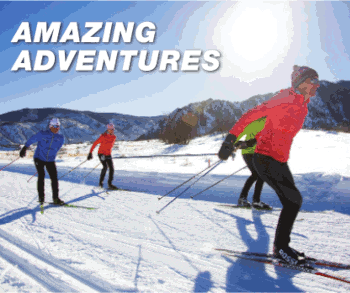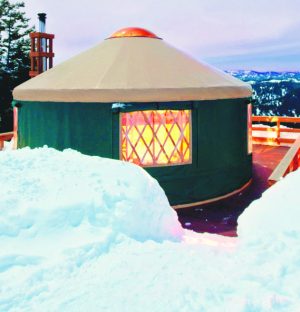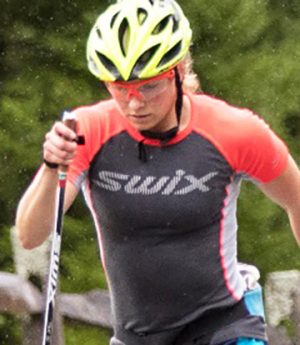October 25, 2006 – Here is the second edition of the Tour de Ski Newsletter. The Cross-Country season will start next weekend, and in only 66 days, the first edtition of the Tour de Ski will begin in Nove Mesto na Morave, the Czech Republic. Today, we are pleased to share with you the latest news, and some additional background information on the Tour as well as on the Viessmann FIS Cross-Country World Cup.
The International Ski Federation and the organizing National Ski Associations of the Czech Republic, Germany and Italy are pleased to announce that the first edition of the Tour de Ski from 29th December 2006 to 7th January 2007 will be called the Viessmann FIS Tour de Ski performance by Craft Sportswear. Besides being the title sponsor of the FIS Cross-Country World Cup, VIESSMANN will also be the Title Sponsor of the FIS Tour de Ski, while CRAFT will be the Presenting Sponsor.
These two companies, Viessmann, the Germany-based manufacturer of heating equipment and Craft, a leading producer of sportswear based in Sweden, will be the only Official Tour Sponsors. To illustrate this partnership in the “look and feel” of the Tour, the official Tour Logo was modified accordingly. “We are happy to have such strong partners for the Tour de Ski in the upcoming season. With Viessmann we could extend the cooperation with a long-term FIS partner while with Craft, we are beginning a new partnership within Cross-Country,†says FIS Marketing and Communication Director Christian Knauth.
What is needed to win the Tour
Eight competitions within ten days! This is a premiere in the history of FIS Cross-Country. What’s more, there will be limited time for regeneration because several hours of travel is sometimes necessary to reach the next Tour venue. Therefore, rapid regeneration will be very important, but so will be tactical prowess and knowing one’s body for correct pacing in the different races. Without doubt, the athletes’ mental strength will also be tested in a particular way. The ten Tour days are bound to be stressful, and the many hours of traveling by the team minibus will not only include rest. The Tour will favor athletes who are able to call a top performance despite Tour stress, possess an inner peace and maintain intact concentration on their Tour goals.
It is obvious that because of the variety of different competition formats, the specialists in certain events will have limited chance to win the Tour. Only athletes who can ski in both techniques and excel in all distances will be able to reckon chances of victory. The ability to deliver short sprints in the middle of a race will be of special importance. Intermediate sprint points (seconds) – to be had at two Tour competitions – are likely to stir up the field greatly.
Two of the eight Tour competitions have never been included in the FIS World Cup Cross-Country schedule before: the so-called “prologue†on the first day, and the “final climb†on the final Tour day. The prologue in the classical technique over 3 km for the ladies and 4.5 km for the men will not have great importance for the final outcome of the Tour but is likely to become a thrilling race because it will be quite tight there! The crowning final of the Tour de Ski will be a free-style race up the Alpe Cermis in Val di Fiemme (ITA). This uphill is quite challenging: it is 3.5 km long, features an average climb of 12 to 14% and includes an altitude gain of 425 meters! In short: The Alpe Cermis offers a great possibility to launch an attack against the field and decide the Tour de Ski for themselves. However, the one who overestimates their strength or attacks too early, may blow! Tactical finesse, courage and boisterous energy are all needed to win the Tour de Ski. Undoubtedly, the final Stage of the Tour will not lack suspense or drama!
Great winter sport challenge in Oberstdorf
The Tour de Ski Organizing Committee in Oberstdorf are faced with a momentous challenge. Besides the Tour de Ski, the team will have to manage three different FIS World Cup weekends in just four weeks. Just days before the Tour de Ski (2nd – 3rd January 2007) will take place in the host village of the FIS Nordic World Ski Championships 2005, the traditional Four-Hills-Tournament will stage its first competition in Oberstdorf on 29th-30th December 2006. At the end of January, the ski jumpers will return for the dress rehearsal for the Ski Flying World Championships which will take place in Oberstdorf in 2008.
“These four weeks will be a great challenge for us,†says Stefan Huber, newly-appointed General Secretary of the Organizing Committee, “but we have a really motivated team which will organize three top World Cup weekends like they did during the World Championships in 2005.â€
Voice of an athlete on the FIS Tour de Ski Giorgio Di Centa (ITA)
Giorgio Di Centa, two-time gold medalist at the Torino 2006 Olympic Winter Games, is considered one of the favorites for the final podium of the Tour de Ski, a new challenge that arouses curiosity and fear even among the top athletes of the World Cup. We asked him for an opinion.
Giorgio Di Centa and the Tour de Ski, what do you think about it? It’s a great novelty; let’s see how the first year will be and if people and media like the event. For us it will certainly mean a great effort, because there are so many races in a few days and recovering will be more difficult. But if this is a way to increase the popularity of Cross-Country skiing, we will do it.
What do you fear most in this kind of races? The sequence of races, sprint races or the final climb? As I said, I really fear the difficulty of regeneration; we shall try and recover as soon as possible, competition after competition, in the limited time available. That will be the most important aspect. If a skier is in a good physical condition, he regenerates more rapidly; if he is already tired, he will only accumulate strain and fatigue will increase, event after event. It’s a challenge that on the one hand scares me, but on the other attracts me.
What do you think your position could be in a hypothetical final results list? I would like to obtain good results, considering that my performances are pretty good in both techniques and in the different distances, too. I obviously think of making good impression, even if I may not be on the top, as it is the first year that this kind of an event is organized and we have no points of reference. Being among the top five would be a positive result.
How will you face sprint races? With serenity! Clearly, if sprinters take part in the first races, it will be difficult to be in the top 30, and I mean that. But then the Tour de Ski goes on and there are other competitions and in the end there could be surprising results for us in the sprint races as well.
Tour de Ski from A to Z
C as in Competitors: The competitiors are the most important part of the Tour. They have to do an outstanding job to reach the finish at Alpe Cermis. But prior to that, they also have to overcome several hurdles.
First, the National Ski Associations have to register their number of athletes and service staff until 31st October. However, note that the number of athletes is limited by a quota which consists of the national distance quota and 50% of the national sprint quota, so several National Ski Associations must select their athletes among several candidates:
Some example for national quota: CZE Ladies: 5 Men: 7 GER Ladies: 7 Men: 7 + 1 (T. Angerer) ITA Ladies: 7 Men: 8 NOR Ladies: 9 +1 (M. Bjoergen) Men: 9
Marit Bjoergen (NOR) and Tobias Angerer (GER) as the the overall World Cup winners from 2005/2006 season get an additional, personal spot outside their national quotas.
By 30th November, the official entry must be submitted by each National Ski Association, including the names of the competing athletes. Changes thereafter are only allowed if an athlete is ill.
The last hurdle is probably also the biggest one: During the Tour, each athlete must finish each of the eight Tour Stages. Otherwise they are out!
D as in Distances: During the Tour, the athletes have to cover quite some distance. The ladies have to race more than 60 km while the men will ski more than 101 km. In the classical technique, the ladies will race a total of 33km and the men 59.5 km. The rest will be in the free technique.
Everything from the traditional competition format of a 10km (L)/15km (M) individual start race to sprints, a mass start (15km (L)/30km (M)) and a pursuit race with shortened distances (5 km + 5 km for ladies, and 10 km + 10 km for men) must be absolved by all competitors.
Many athletes view recovery as one of the main challenges during these ten days especially given the long journeys between the different Stages. The estimated distance of travel between Nove Mesto na Morave and Val di Fiemme amounts to some 1270 km without travel to Prague and back home.
Viessmann FIS World Cup Cross-Country presented by Rauch
There are limited rule changes being introduced this season. The only real rule change is that the sprint races will now be raced with six athletes in all the final rounds instead of five in the semi-finals and four in the finals like it was last year. “I think this will lead to more exciting quarter finals and semi-finals as the two best Lucky Losers – based on their quarter final or semi-final racing time – will now make it to next round!†says FIS race director Jürg Capol about this new rule.
There will also be two trials during this season: At La Clusaz (FRA), the so-called “Nations’ Boxes” for feeding will be tested, as opposed to any official feeding stations. The focus will especially be on the security aspects of the concept to prevent accidents. In Oslo (NOR) in March, the changing skis during the race at a fixed “Nation’s Box” in the stadium will be trialed.
The overall goal is to make the overall World Cup more exciting and any future rule changes will aim to have the best racers in the same races. In the FIS Autumn meetings in Zurich, the Cross-Country Committee discussed the options for a special combination weekend with sprint and distance races awarding additional World Cup points. This idea will in a sense be trialed at the FIS Tour de Ski and then re-evaluated in the Spring meetings in Portoroz (SLO) in May
World Cup starts in Duesseldorf (GER) for the 5th time
A total of four World Cup races of the International Ski Federation (FIS) are scheduled at the weekend of 28th – 29th of October in Duesseldorf (GER). This is going to be the first measuring of the competitors´ strength after the Olympic Winter season 2005/2006. The Cross-Country World Cup season starts traditionally with the sprint races at the bank of the river Rhine. For the 5th time the world elite of Cross-Country skiers meets in the regional capital to battle for the first World Cup points. On Saturday, 28th October, the individual sprint races for ladies and men take place, on Sunday the team sprint races are scheduled. 146 athletes from 23 countries are registered to take part in these competitions, which is more than in the last four years. Also some typical “distance racers†will start in Duesseldorf, such as Olympic Champion Katerina Neumannova from the Czech Republic, hoping to begin collecting World Cup points.
Top News Stories
FIS Tour de Ski Newsletter
provided by the FISLeave a Reply
You must be logged in to post a comment.






![National camp action [P]...](https://skitrax.com/wp-content/uploads/2019/08/Duluth-4-2019-08-08-at-10.46.51-AM-300x246.png)
![Matt Liebsch on the CXC Elite Team [P] CXC...](https://skitrax.com/wp-content/uploads/2019/08/Matt-Liebsch-CXC.2-525x700.4-300x267.jpg)
![Dan LaBlanc [P]...](https://skitrax.com/wp-content/uploads/2019/08/Dan-LaBlanc-img_1855.3.jpg)
